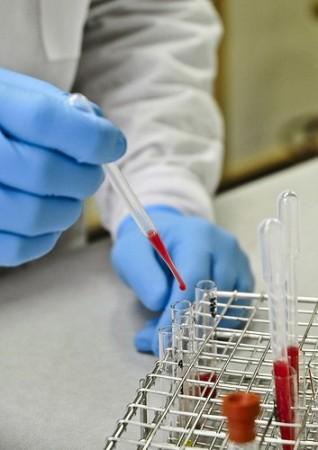
A new blood test can help detect cancer accurately and early, researchers reveal.
The new Lymphocyte Genome Sensitivity (LGS) test has been found promising in detecting skin cancer melanoma, colon cancer and lung cancer.
The test works by exposing white blood cells to different amounts of ultraviolet light (UVA) and measuring the DNA damage caused by the light exposure. Researchers found that the DNA damage thus caused varied from people with and without cancer and those with pre-cancerous conditions.
"We found that people with cancer have DNA which is more easily damaged by ultraviolet light than other people, so the test shows the sensitivity to damage of all the DNA – the genome – in a cell," lead researcher of the study Professor Diana Anderson, from the University of Bradford, in UK said in a news release.
The effectiveness of the blood test was tested on 208 people. Of the total, 94 people were healthy and the rest 114 were suspected of having cancer. During the study, blood samples collected from the participants were coded, anonymised and randomised. Using five depths of agar, the samples were subjected to UVA light exposure.
Researchers used length of a comet-like tail formed in the samples after the UVA exposure to determine DNA damage and cancer risk. People with cancer had DNA with longer tails than the others. Of the total 114 cancer suspects, 58 were diagnosed with cancer and 56 with pre-cancerous conditions.
Interestingly, the new blood test can help avoid undergoing several costly - invasive tests like colonoscopies and biopsies- and save time. However, researchers said that more research was needed to re-confirm their findings.
"These are early results completed on three different types of cancer and we accept that more research needs to be done; but these results so far are remarkable," Professor Anderson, explained. "Whilst the numbers of people we tested are, in epidemiological terms, quite small, in molecular epidemiological terms, the results are powerful. We've identified significant differences between the healthy volunteers, suspected cancer patients and confirmed cancer patients of mixed ages at a statistically significant level of P<0.001. This means that the possibility of these results happening by chance is 1 in 1000. We believe that this confirms the test's potential as a diagnostic tool."
Findings of the study have been published in the online edition of FASEB Journal.

















